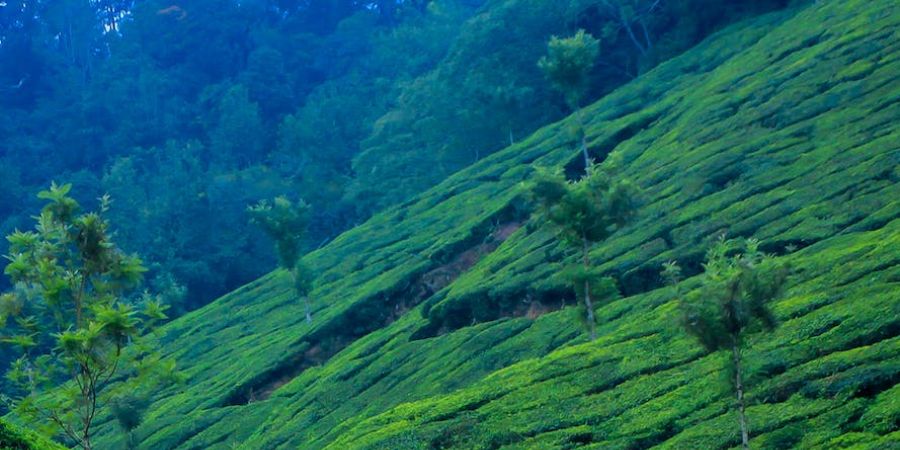

The town and hill resort of Munnar is located in the Idukki district of Kerala, a state in southwest India. Munnar is located in the Western Ghats mountain range at a height of roughly 1,600 metres (5,200 feet) above mean sea level. The "Kashmir of South India" is another name for Munnar, which is also a well-liked honeymoon location.
According to legend, the name Munnar, which refers to the town's location at the meeting point of the Kundali, Nallathanni, and Mudhirapuzha rivers, means "three rivers".
History
Tribal hunters and gatherers like the Malayarayan and Muthuvan have lived in the area for countless years. While Tippu Sultan's campaign in Travancore was taking place, legend has it that Colonel Arthur Wellesley, later the Duke of Wellington, was the first British person to pass through Munnar. However, this legend is unsupported by historical evidence. Benjamin Swayne Ward conducted the first survey of the area in 1816–1817. He followed the Periyar into the Western Ghats and set up camp at the confluence of three rivers, from whence Munnar got its name.
Nearly 50 years later, Sir Charles Trevelyan, the governor of Madras, gave Col. Douglas Hamilton the task of exploring the hill country in the western part of the Madras Presidency. He specifically asked for advice on the viability of establishing British sanatoria in the South and the development of revenue-generating projects without endangering the environment, as had occurred in Ceylon where coffee had destroyed not only the rain forest but also paddy cultivation. Hamilton scaled all of the Munnar region's Ghats. John Daniel Munro remarked 15 years later that a large portion of Munnar's land was ideal for coffee planting.In 1879, Munro, Henry Turner, and his half-brother AW Turner bought the Cardamom Hills from the Raja of Travancore and started thinning the jungle surrounding Devikulam. The 1880s saw the establishment of numerous tea plantations in the region by other Europeans. Early plantations were mostly straw cottages with little conveniences. Dalits from present-day Tamil Nadu made up the majority of the labour force on the tea estates.
Roads to the lowlands were eventually built, and at Bodinayakanur, in the western Madras Presidency, planters obtained supplies from Suppan Chetty, the local headman. He would keep supplying the nearby tea farms with goods alongside his son Alaganan Chetty (later an MLA). 26 estates had been built in the hills by 1894, but they were all experiencing losses. A separate company, Kannan Devan Hills Corporation (KDHC), was established in 1897 to manage the tea estates. KDHC was later acquired by the American Direct Tea Trading Company Ltd., which owned 26 estates—almost all in the region with the exception of a few in the lower areas—most of which were planted with coffee and some with cinchona.
A ropeway was constructed in 1900, and later, monorails were added to make it simpler to convey products to the plains. P. R. Buchanan assumed control as general manager in 1901 and started the largest-scale removal of jungles for plantations. A new railway's construction began in 1908, and it opened that same year. Around 16,000 acres of the area were under cultivation in 1911.
A flood that rushed through Munnar in 1924 ruined the rail track and damaged the road. It was decided to build a ropeway to transport tea in its stead. This was then replaced in 1930 with a modern road that greatly facilitated transportation. Nearly 28,000 acres of land were under cultivation in 1952. After the American Revolution, Indian planters took over. Tata and Finlay created the first instant tea factory in the nation in 1964 after purchasing the KDHC, which controlled the majority of tea estates. The Keralan government set out in 1971 to reforest every hilltop that wasn't being exploited for crops. However, as a result of the subsequent talks, Tata was able to keep the majority of the land, leaving it with 57,000 acres.
The majority of workers on tea estates are still without land. The Viduthalai Chiruthaigal Katchi, a Dalit organisation from Tamil Nadu, began encroaching on Kerala in the early 2000s and demanding land for labourers. VS Achuthanandan pledged in 2009 that he would support giving land to the mostly Tamil Dalit estate labourers. The procedure slowed down, nevertheless, and as of 2018, the majority of families were still without land.
Tourism officials are thinking about rebuilding the Kunda Valley Railway in Munnar, which was destroyed by a flood in 1924 in an effort to draw tourists.
